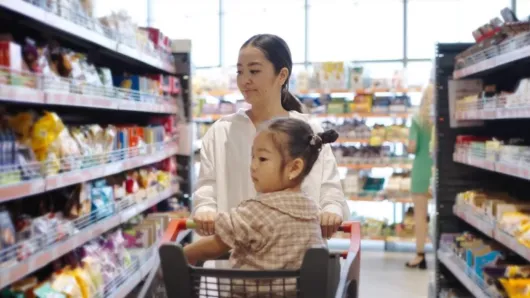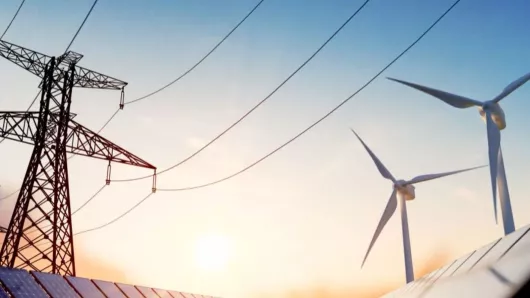Clear polyethylene terafalate or PET packaging can be found in almost any retail setting, from grocery stores and cafes to electronic stores and more. It's one of the most important types of consumer packaging available today for safe food handling and protection. Everything from leafy greens to muffins to even eggs. But even if it's the same number one PET used in bottles that everyone knows can be recycled, clamshells and blister packs complicate the recycling stream, and the pigmented PET thermoform packaging from reheatable frozen foods definitely goes straight to the landfill. Right? Not so fast. Advances in material design in the actual material recovery facilities, and even in consumer education, our rendering this myth obsolete. Let's unpack this important topic together.
PET Overview
According to a study conducted in 2020 by resource recycling systems and the food service packaging Institute, there are 1.6 billion pounds of PET thermal forms in circulation around the United States and Canada today.
While this material is widely used in bottles for water and carbonated beverages, it's also widely used in bakeries, grocery stores for fruits and vegetables, and other food preparation and packaging examples. Of the 1.6 billion pounds of PET thermoform, only about 9% is currently recycled today.
PET Recyclability: Challenges
The important question is, how do we make these packages easier to recycle? How do we increase the amount of material that gets reclaimed and put back into the packaging stream to make new thermoform containers? It starts by understanding the subtleties of PET thermoforms as a material.
Thermoform products are very similar to bottle-grade PET but they aren't as widely recognized as recyclable. It's taken many years for people to recognize that bottles can be recycled. The industry has done a lot to promote that from placing receptacles that they use, to using labeling standards, and even consumer education campaigns. As we begin to do the same for thermal forms, we have to examine a few critical differences between PET bottles and thermoform packaging.
First off in most cases PET clamshells and trays used for fruit and vegetable packaging are in mono-material construction, meaning it is comprised of only one material, which is PET- the same material used in making water bottles. However, there are some food products that require longer shelf life. In this case, the packaging material will have multiple layers not all of which are PET, and those packages cannot be mixed into the PET recycle stream.
But further complicating the recyclability of these packages, you've got to account for other features that have been added to the thermal form package, such as labels, absorbent pads, or adhesives and glues used to attach the labels and pads to the container. All of those can become sources of contamination for recycling.
How Do We Increase PET Recyclability?
To maximize recyclability of the PET containers, we have to embrace the value of post-consumer recycled material that can be created from it. That value is directly tied to the quality of the source stream.
Sonoco is aware of the challenges in procuring good quality recycled material. One of the ways we do this is through the use of clean wash flake to make our PET thermoform containers. This is the unpelletized form of the post-consumer recycled material or PCR that's used in the bottle industry. The benefit of using the flake form is that it eliminates the pelletizing process which reduces the overall carbon footprint of the reclamation process, while still maintaining quality for food context safety and effective performance.
How can you identify the difference between a PET thermoform that can be recycled? Check the resin identification code embossed on the package- if it has a number one, then it's safe to put in the recycling receptacle.
Research shows that how we communicate about the sourcing and quality of recycled PET makes a difference in driving the adoption of including PET thermoform in the recycling stream. In a recent joint research effort with industry partners, Sonoco found that there is a distinct opportunity to begin adjusting the amount of thermoform that can be included in the PCR PET materials.
To increase the amount of thermoform PET used in recycling, the question is not what is technically possible, but what the market can bear. Keeping in mind some of the key factors driving quality in the recycling process such as wash-off adhesives and removable labels, we can start working on a solution by using higher loadings of the thermoform PET in the recycle mix.
Now doing this will have an immediate effect on chipping away the ginormous 1.6 billion pounds of thermoform PET that have been going to the landfills. When we incorporate the PET thermoform in the recycle mix, the recycled thermal form PET becomes the PCR that is readily available for use in producing new products. Talking about recycling PET, we have to consider a key material property known as intrinsic viscosity or IV for short. The intrinsic viscosity is an important factor in how recyclable a given PET thermoform is.
Although the IV of the recycled PET can be increased through a process called solid-state polymerization or SSP, the common understanding is that the lower the IV, the lower the molecular weight of the polymer, which translates to lower performance in our applications after multiple reprocessing. Essentially, there's a limited number of times that we can reprocess PET thermoform and still maintain the desired level of quality and performance from the PCR output, as compared to when we use virgin material.
At Sonoco we are evaluating how we can minimize the performance difference between using PCR and virgin materials, and we are looking for opportunities to repurpose some of the lower IV PCR PET materials into industries that can process and use them, such as fiber spinning for non-wovens.
More Challenges to PET Recyclability
PET thermoform packaging isn't limited to just clear containers. It can be found in a variety of colors. Take black trays for example. The frozen food industry has used black trays for years because they help the food stand out against a dark background. However, the black colorant introduces a challenge to the recycling industry. The traditional colorant used in these packages is carbon black, and is not detectable by the near-infrared detectors used to identify and sort plastics in the recycling stream. This is because carbon black is a strong absorber of light, so there isn't enough being reflected back to the detector to properly identify the material. Material science advancements in our labs and others around the industry have enabled us to develop NIR detectable colorants that can be safely used in food packaging.
Additionally, legislation continues to move the industry forward by setting deadlines for when specific amounts of PCR content must be incorporated into plastic packaging. Combined with the work of large organized projects, like the new plastic's economy and the US Plastics pack to produce packaging that is 100% reusable, recyclable, or compostable, many companies are simply moving away from dark pigmented substrates altogether in favor of clear packaging.
Breakthroughs in PET Recyclability
R&D breakthroughs and package design have enabled the reduction in the amount of plastics used. For example, Sonoco has introduced PET thermoforms for the leafy green salad markets that incorporate a resealable flexible lidding to replace the rigid plastic lid. Less plastic without compromising on package performance. Furthermore advances in chemical recycling allow material recovery facilities to accept higher levels of contaminants than traditional mechanical recycling. In addition, the industry is working together to overcome some of the larger roadblocks to thermoform recycling and increase the recyclability of the 1.6 billion pounds of PET thermoforms produced annually.
Conclusion
1.6 million pounds of PET in North America provides a compelling reason to continue advancing the recyclability of these packaging materials, and the opportunity to make a difference. And that number doesn't just rest on the recyclers, or the manufacturers, or even consumers. As you've seen, there are ways everyone in the industry can contribute to busting this myth. Whether it's in adjusting our choices for material selection, informing consumer behaviors, or driving innovation in the lab, everyone has the chance to put more PET thermoform plastics back into the recycling stream, create better post-consumer recycled materials, and significantly increase the amount of PET thermoforms that are recycled. And that's this episode of sustainability unpacked.


